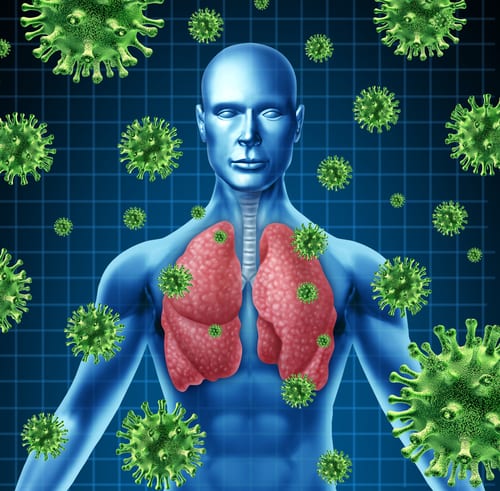When a healthy person inhales, he/she enlists the diaphragm, a powerful muscle that sits underneath the lungs, to draw in air. The air is filtered and humidified though the nose or mouth then passes down the windpipe into the bronchi tubes, which then lead into bronchioles or smaller tubes that travel into the lung tissues. The bronchioles, in turn deliver the air to millions of tiny sacs called alveoli, which reside deep in the lungs. The alveoli passively expand and contract as oxygen is delivered to the blood stream and carbon dioxide is sent back to the lungs to be exhaled. In a healthy person, it is a perfectly regulated process, efficient no matter whether one is running, eating or sleeping.
This process goes awry in asthmatics. When a child or adult tries to breathe during an attack, their respiratory function is compromised. First the airways constrict. Next, a powerful inflammatory reaction may occur, which activates inflammatory cells such as mast cells and macrophages. As tissues in and around the lungs become irritated and inflamed, the muscles surrounding the bronchi tighten up. Once the respiratory tissues are irritated and swollen, they are easily infected by bacteria or viruses or they become reactive to pollens, dust, animal dander, mold or environmental chemicals. Goblet cells then secrete mucus, which can clog airways and further irritate the already raw and inflamed tissues. The end result is the common symptoms of an asthma attack.
Doctors & naturopaths categorize asthma into the following forms: 1) Allergic asthma which is asthma caused by allergens inhalants that are breathed into the lungs This can include a wide range of inhalant allergens from dust & dust mites, pollens, grasses, animal dander, molds. Other irritants can be environmental chemicals such as smoke, diesel fuels, 2) Non allergic asthma, often triggered by chronic infections (both viral, yeast or bacteria) 3) Asthma resulting from emotional or physical situations (such as exercise) an often overlooked cause of asthma not recognized by much of the medical community is asthma as a reaction to foods, either allergic or intolerance. More evidence for this type of trigger is mounting. Stay tune for my next blog on food sensitivities being one of the hidden causes & triggers for chronic inflammatory lung conditions.





